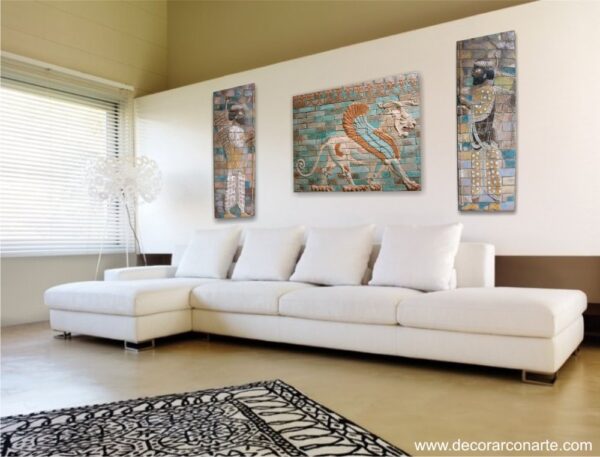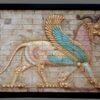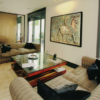Description
Bas-relief of Winged Lion. Reproduction of a relief made of molded marble (marble powder bonded with resins), with polychrome application and aging patinas.
Relief mounted on a wooden frame.
Measurements: Height: 77 cm. Width: 117 cm. Depth: 3 cm. Dimensions refer to the ensemble with frame.
This relief is inspired by a fragment of molded and glazed bricks from the royal palace of Darius I in Susa, dating back to the 5th century BCE (Persian Empire). It depicts a protective genius, taking the form of a mythological being resulting from the union of four symbolic animals: the lion, the eagle, the dragon, and the ram. These winged lions are inherited from the Assyrian tradition of lamassu, large sculptures of winged lions or sphinxes. In Assyrian mythology, the lamassu were celestial genies whose effigies were placed at the thresholds of palace gates for the protection of the premises.
The Persian Empire was founded by King Cyrus the Great in the 6th century BCE, becoming one of the most influential civilizations of antiquity. Its vast territory stretched from the Mediterranean to the Indus, encompassing unprecedented ethnic and cultural diversity. The Achaemenids implemented a centralized government and efficient administration that facilitated the management of a vast empire. A communication system was established through the famous Royal Road, which traversed the empire’s territories from west to east, from the coast of Turkey to Persepolis, facilitating trade and information transmission. The Persian Empire was known for its religious and political tolerance, allowing conquered peoples to retain their traditions and religious practices. The conquest by Alexander the Great in the 4th century BCE marked the end of the Achaemenid dynasty, ushering in the Hellenistic rule of the Seleucid Empire, until the conquest by the Parthian king Arsaces in the 3rd century BCE.
Decorating with reproductions of reliefs inspired by Mesopotamian art, such as this bas-relief of winged lion, beautifies our home and turns it into a window to the past that encourages reflection and dialogue about the roots of our civilization.























Reviews
There are no reviews yet.